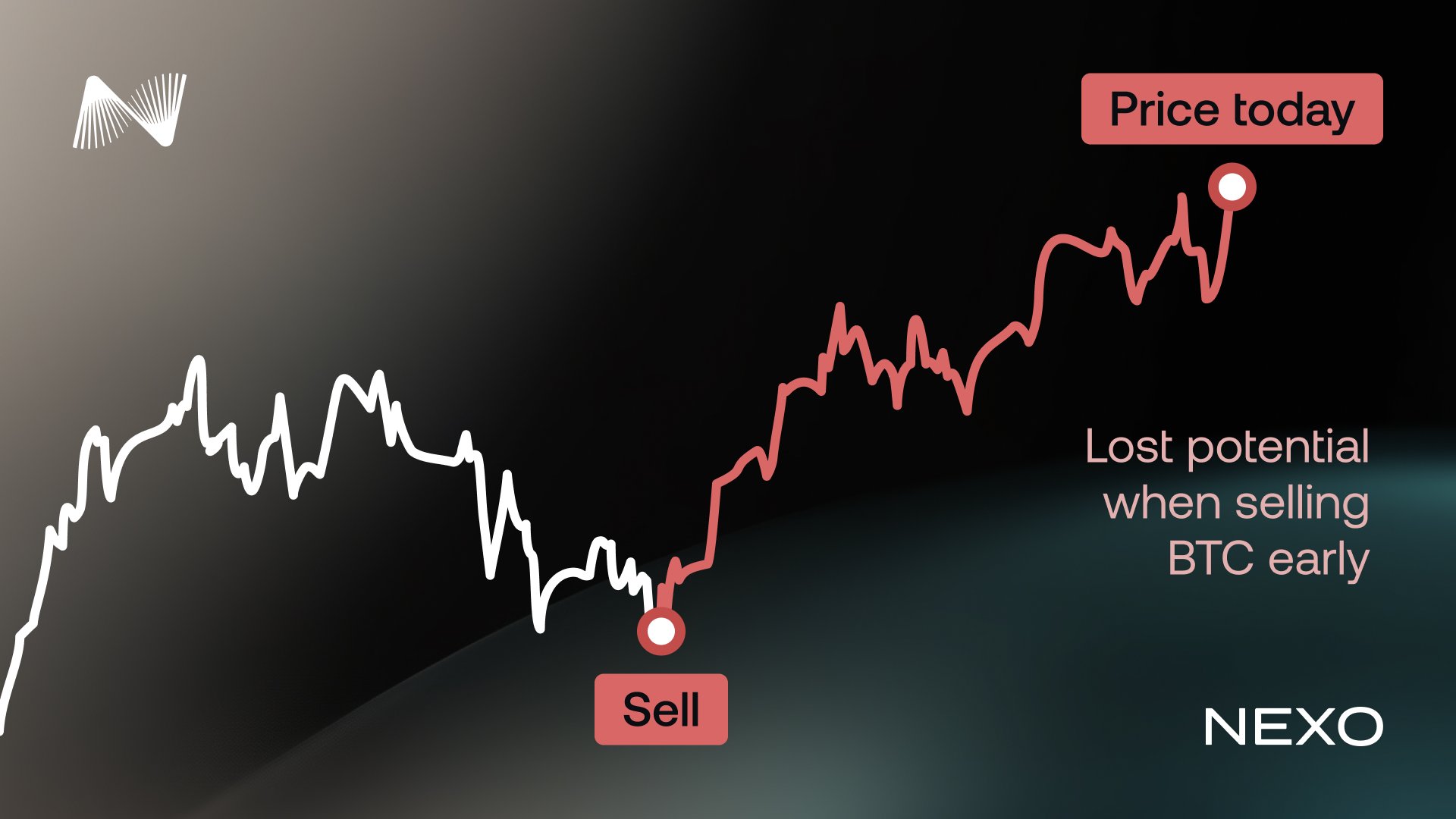是卖掉自己的 Bitcoin 更好,还是拿它来借款更好?
Nov 19•1 min read

你已经持有 Bitcoin 一段时间了。 也许你是在几年前买入的,也可能是最近才入场,但无论如何,你都相信它值得长期持有。 但在你持有的这段时间,生活并不会按下暂停键。
你可能有房屋装修计划、创业想法,或者只是有件想做的事,却不想为此套现你未来的潜力。
所以,你会面对一个每位投资者最终都会思考的问题:我是该卖掉手里的资产,还是能在不放弃它的前提下用起来?
传统做法:卖出你的资产。
卖出 Bitcoin 是最直接的选择。 你轻触几下按钮,BTC 就变成现金,可以立刻支出。
一切看起来很简单——直到行情再次上涨。 你在 30,000 美元卖掉的那点 Bitcoin,之后可能会涨到 60,000 美元。 你已经离场了,若想重新买回,只能在更高的价位进场。
在许多国家,卖出还会带来税务影响。 一旦卖出,你的收益可能马上就要缴税。
所以没错,卖出能立刻获取流动性——但这是一次性决定。 这有点像为了吃苹果而把整棵苹果树砍掉。 你现在得到了想要的东西,却失去了本可以在未来继续成长的收益。
新思路:用你已有的资产来借款。
现在,Bitcoin 持有者也可以像几代以来的富裕人群那样运作资产。
当房主需要现金时,他们不会卖房子——而是拿房子的价值去借款。 当投资者需要流动性时,他们不会抛售股票——而是把股票作为抵押品来使用。
你也可以对 Bitcoin 采取同样的方式。
当你拿 Bitcoin 抵押借款时,你并没有卖掉它。 你只是把它锁定为抵押品——就像把它放进一个安全的数字金库中,同时以你已经拥有的资产为担保获得贷款。
实际流程大致是这样的:
- 你先决定自己想借多少金额。
- 平台会计算,相比于你的 Bitcoin,这个借款金额对应的价值是多少。 例如,如果你的 BTC 价值 50,000 美元,你可以较为稳妥地借出大约 10,000 至 15,000 美元。
- 你将以现金或稳定币的形式接收这笔金额。 你可以把这笔钱用在任何地方——投资、支付账单或为项目提供资金。
- 在你的 Bitcoin 被抵押期间,它会在整个贷款周期内被安全托管。 在此期间你无法动用或交易它,但它始终与账户关联,一旦你完成还款,就会全部解锁归还给你。
如果 Bitcoin 价格发生变化会怎样?
如果 Bitcoin 价格上涨,你的抵押品价值也会随之增加——这是个好消息。 你可以继续享受上涨带来的收益,若有需要,之后还可以追加借款。
如果行情下跌,你的贷款价值比——即 LTV——会自动发生变化。 LTV 是衡量贷款风险高低的一种简单方式。 它对比的是你借了多少和你的 Bitcoin 抵押品价值有多少。
例如,如果你借出 10,000 美元,而你的 Bitcoin 抵押品价值为 50,000 美元,那么你的 LTV 就是 20%。 这一水平通常被视为非常安全。
但如果 Bitcoin 价格下跌,你的抵押品价值跌到 33,000 美元左右,你的 LTV 就会升至约 30%。 你仍然欠着同样的 10,000 美元,但用来做担保的资产价值缩水了,所以这个比例会跟着上升。
每个平台都会设定一个安全阈值。 如果你的 LTV 升得太高(比如接近 70–80%),你会收到通知,提示你需要:
- 追加更多 Bitcoin 作为抵押,提高整体担保价值,或者
- 偿还部分贷款,从而降低你的负债。
如果你没有操作且价格继续下跌,系统可能会自动卖出一小部分你的 Bitcoin,以重新平衡 LTV,避免整体被清算。
这一机制同时保护你和平台——即使在剧烈波动的行情下,也能确保你的贷款始终有足额担保。
为什么这一策略特别适合长期持有者。
拿 Bitcoin 抵押借款,并不是为了盲目加杠杆。 而是为了以资产所有者的思维来思考。 你已经积累了一项有价值的资产。 现在,你不是把它卖掉,而是学会在不牺牲未来上涨空间的前提下,把它用起来。
这正是许多富裕家族几十年来一直坚持的原则:
他们让资产在后台持续运作,当需要流动性时,就会通过借款,而不是卖掉那些他们看好、认为还会增长的资产。
这种方式既能让你继续投资于自己认可的资产,又能在日常生活中保持充足的灵活度。
不过,这种方式同样意味着责任。
每一笔贷款,即便是 Bitcoin 抵押贷款,都伴随着相应责任。 如果市场大幅下跌,你的抵押品价值缩水,你可能需要及时应对——要么追加 Bitcoin 抵押,要么提前偿还一部分借款。
这也是为什么理性的借款人不会把可借额度用满。 他们会保持审慎,只借真正需要的金额,而不是计算器显示的最高可借数额。
这样一来,即使行情回调,他们也依然有足够的缓冲空间。
在 Nexo 上如何实现。
在像 Nexo 这样的平台上,用 Bitcoin 抵押借款被设计得简单而灵活:
- 你将 Bitcoin 充值并作为抵押。
- 你可即时获取资金,无需信用审核或漫长审批流程。
- 你会以 FiatX* 或 USDC 等稳定币的形式接收资金。
- 你可以随时选择还款。
- 你的 Bitcoin 会被抵押并在贷款期间暂时锁定,如果行情上涨,它仍有机会继续增值。
当你全部还清贷款后,你的 BTC 会如数解锁,完整归还到你的账户中。
前往 nexo.com/borrow 了解具体运作方式。
放大视角,看得更远。
多年来,Bitcoin 一直被视作高风险试验品——只有早期参与者或科技爱好者才会真正关注。 这种看法已经发生了变化。
到了 2025 年,Bitcoin 已从边缘资产走向金融主流。 大型资产管理机构、对冲基金,甚至上市公司,如今都会把它纳入资产负债表。 各大银行正在开发加密资产托管服务。 监管机构也在制定更清晰的监管框架,而不再是一刀切的全面禁令。
这一不断加深的机构参与,正释放出成熟化的信号。 Bitcoin 不再只是“数字 Gold”——它正逐步成为一种被广泛认可的资产类别。 各类机构对它的态度,正从“投机工具”转变为“多元化投资组合中,与股票和债券并列的组成部分”。
这种转变也在影响着个人投资者的思维方式。 越来越多人不再只把 Bitcoin 当成短线交易或择时工具,而是视作值得精细管理的资产——可以拿来抵押借款、赚取收益,并纳入长期财富规划。
*FiatX 代表在 Nexo 平台内使用的、与传统法币对应的数字形式。
这些资料在全球范围内均可查阅,但该等资料的可得性并不代表能够使用所述服务。相关服务在部分国家/地区可能不可用。 本资料仅供一般信息参考之用,不构成任何财务、法律、税务或投资建议,亦非对任何 Nexo 服务的要约、招揽、推荐或背书。相关内容非个性化定制,未考虑任何特定投资目标、财务状况或个人需求。 数字资产具有高度风险,包括但不限于市场价格剧烈波动、监管政策变化以及技术更新迭代。 数字资产的过往表现并不代表未来结果。 数字资产并非货币或法定货币,不受政府或中央银行背书,且大多数数字资产不具有标的资产、收入来源或其他价值来源。 请结合个人情况进行独立判断,建议在作出任何决策前咨询合格专业人士。